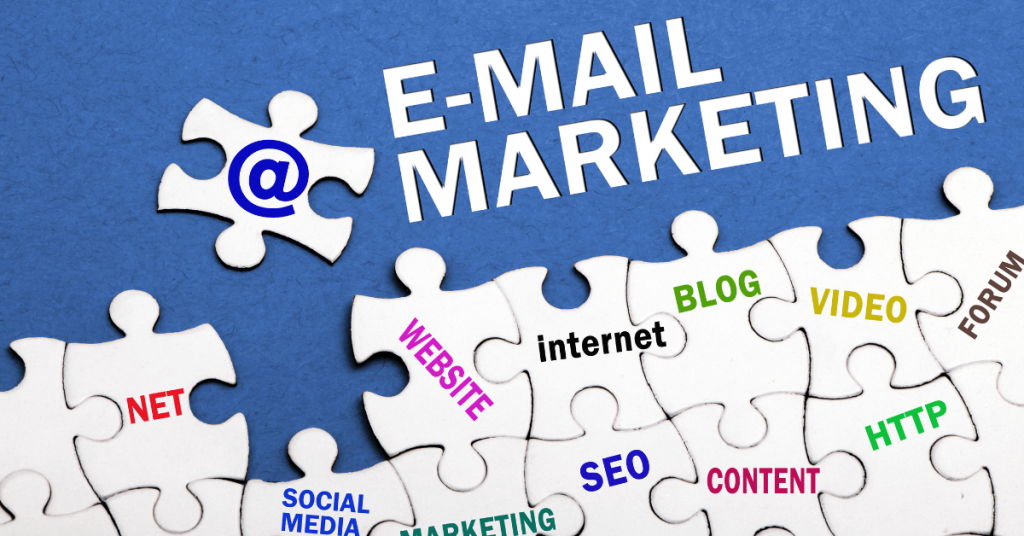In recent years, Software as a Service (SaaS) has emerged as a game-changer for businesses of all sizes. By offering cloud-based software solutions, SaaS providers have revolutionized the way companies access, utilize, and pay for software. However, not all SaaS solutions are created equal. It is essential to understand the differences between Vertical SaaS and Horizontal SaaS (Vertical SaaS vs Horizontal SaaS) to make informed decisions when selecting the right software for your business needs.
Before diving into the nuances of Vertical SaaS and Horizontal SaaS, let’s take a moment to understand the broader SaaS landscape.
What is SaaS (Software as a Service)?
SaaS, or Software as a Service, is a software delivery model where applications are centrally hosted and made available to users over the Internet. Instead of purchasing and maintaining software licenses, users can access SaaS solutions on a subscription basis, paying only for the features they need and the duration of their usage.
The benefits of SaaS are numerous. It eliminates the need for upfront investments in hardware and software licenses, reduces maintenance and upgrade costs, and provides scalability and flexibility to adapt to changing business requirements. As a result, SaaS has gained tremendous popularity across industries, transforming the software market.
Popular examples of SaaS applications across different industries are Salesforce, Oracle Netsuite, Asana, Slack, Mailchimp, FreshBooks, etc. These are just a few examples, and there are numerous other SaaS applications available across various industries to address different business needs.
To know about newly launched SaaS products, visit the BufferApps platform. It is the SaaS marketplace where you can discover, try, test and buy newly launched SaaS products. No doubt it is the perfect place to discover your next favourite SaaS application.

What Is Horizontal SaaS?
One of the primary categories within the SaaS ecosystem is Horizontal SaaS. Horizontal SaaS solutions are characterized by their broad scope and general-purpose nature. They are designed to cater to a wide range of industries and market segments, offering functionalities applicable across various business domains.
Examples of popular Horizontal SaaS applications include collaboration and project management tools, customer relationship management (CRM) systems, and human resources (HR) management software. These solutions provide a versatile set of features that can be customized to meet the needs of different businesses regardless of their industry.
Horizontal SaaS solutions offer several advantages. These SaaS applications easily adapt to suit different business processes, providing a solid foundation of functionalities. By targeting a broad audience, Horizontal SaaS vendors can leverage economies of scale, often resulting in cost-effective pricing models. Additionally, the widespread adoption of Horizontal SaaS solutions means that integrations with other software tools and third-party services are readily available.
What Is Vertical SaaS?
In contrast to Horizontal SaaS, Vertical SaaS solutions focus on specific industries or niche markets. They are tailor-made to address the unique needs and challenges of particular verticals, providing industry-specific features and functionalities.
Vertical SaaS applications can be found in a wide range of industries, including healthcare, finance, real estate, and more. These solutions go beyond the general-purpose capabilities of Horizontal SaaS. Moreover, offer domain-specific features designed to streamline workflows, ensure compliance with industry regulations, and drive operational efficiency.
For instance, in the healthcare industry, Vertical SaaS solutions may include electronic health record (EHR) systems, telemedicine platforms, and medical practice management software. These applications are designed to meet the stringent security and privacy requirements of the healthcare sector while providing specialized features for patient care and administrative tasks.
Similarly, Vertical SaaS solutions in the financial services industry may include portfolio management tools, loan origination systems, or risk assessment software. These applications incorporate industry-specific algorithms, integrations with financial data providers, and compliance features to meet the unique needs of financial institutions.

Key Differences between Vertical SaaS and Horizontal SaaS (Vertical SaaS vs Horizontal SaaS)
Understanding the differences between Vertical SaaS and Horizontal SaaS is crucial for selecting the right software solution for your business. Let’s explore some key differentiators:
| Aspect | Vertical SaaS | Horizontal SaaS |
|---|---|---|
| Target audience and market segmentation | Specific industries or niche markets. Vertical SaaS solutions focus on serving a particular industry or market segment, providing specialized solutions for their specific needs. | Broad audience across industries. Horizontal SaaS solutions aim to cater to a wide range of industries and market segments, offering a more generalized approach to meet the common requirements of different businesses. |
| Customization and industry-specific features | Deep customization and industry-specific features. Vertical SaaS solutions are designed to offer extensive customization options and industry-specific functionalities to align with the unique workflows and requirements of a specific vertical. | More flexibility in adapting to different business processes. Horizontal SaaS solutions offer a certain level of customization but prioritize versatility and adaptability to cater to diverse business needs across multiple industries. |
| Domain expertise and industry knowledge | Strong domain expertise and industry-specific knowledge. Providers of Vertical SaaS solutions possess deep understanding and expertise in the target industry or vertical. They are well-versed in the specific challenges, regulations, and best practices of that industry. | Broader range of expertise across industries. Horizontal SaaS providers may have a broader understanding of various industries and possess expertise that spans multiple domains. While they may not have the same level of industry-specific knowledge as Vertical SaaS vendors, they offer a more generalist approach that can be applied to different business contexts. |
| Integration and interoperability | Vertical SaaS solutions often offer deep integration with industry-specific systems and tools used within the targeted vertical. They may have pre-built integrations with commonly used software in the industry. | Horizontal SaaS solutions typically focus on providing flexible integration options to connect with various third-party applications and systems, accommodating the diverse needs of different industries. |
| Target Audience and market segmentation | Vertical SaaS solutions may face less competition within their specific industry or niche, as they are tailored to address the unique requirements of that vertical. | Horizontal SaaS solutions often face more competition as they compete in a broader market across multiple industries, resulting in a more crowded landscape and potentially more options for customers to choose from. |
Considering these differences is essential when selecting the right SaaS solution for your business. It’s important to evaluate your specific needs, industry regulations, scalability requirements, integration capabilities, and the total cost of ownership (TCO) before making a decision.
Related to this, also understand the difference between Micro SaaS and Vertical SaaS for better decision-making.
Considerations For Choosing Between Vertical and Horizontal SaaS
When making a choice between Vertical SaaS vs Horizontal SaaS, you need to consider several factors. Let’s explore some key considerations:
Business requirements and specific needs:
Assessing your specific needs is crucial to determine the right fit. Vertical SaaS solutions offer industry-specific functionalities and workflows tailored to your niche, providing a more targeted and specialized approach. However, horizontal SaaS solutions offer flexibility for enterprises with various needs by giving capabilities that may be used across industries.
Industry regulations and compliance:
Highly regulated industries have specific compliance requirements. Vertical SaaS solutions are often designed with these regulations in mind, offering built-in compliance features and industry-specific security measures. However, It is essential to ensure that the chosen solution adheres to the necessary regulations and safeguards sensitive data in accordance with industry standards.
Scalability and future growth:
Consider your business’s growth plans and scalability needs. Vertical SaaS solutions that cater to your specific industry may provide scalability options aligned with industry-specific demands. Horizontal SaaS solutions, with their more generalized approach, can often accommodate growth by offering flexible features that adapt to changing business needs.
Integration capabilities with existing systems:
Evaluate how well the SaaS solution integrates with your existing software systems and tools. Seamless integration enables smooth data flow and collaboration across different platforms. Vertical SaaS providers may offer pre-built integrations with industry-specific software. On the other hand, Horizontal SaaS solutions typically focus on providing integration options for a wide range of third-party applications.
Total cost of ownership (TCO) and return on investment (ROI) analysis:
Conduct a thorough analysis of the TCO and ROI for each option. Consider factors such as upfront costs, subscription fees, customization expenses, and potential cost savings from improved efficiencies. Vertical SaaS solutions may require higher initial investments due to their industry-specific features. However, Horizontal SaaS solutions may offer cost advantages through shared resources and economies of scale.
These factors can help you make a smart business decision that aligns with your business goals and maximizes your investment.
Use Cases and Success Stories
To gain a better understanding of the practical applications and benefits of Vertical SaaS and Horizontal SaaS. Let’s explore some real-world use cases and success stories:
1. Vertical SaaS Use Case: Healthcare Industry
In the healthcare industry, Vertical SaaS solutions have revolutionized patient care and administrative operations. Electronic health record (EHR) systems, such as Epic Systems and Cerner, streamline patient data management, enable secure information exchange between healthcare providers, and enhance care coordination.
These solutions adhere to industry-specific regulations. Such as the Health Insurance Portability and Accountability Act (HIPAA), ensuring the confidentiality and privacy of patient information.
2. Horizontal SaaS Success Story: Project Management
Project management tools like Asana and Trello exemplify the benefits of Horizontal SaaS solutions. These platforms adapt their flexible project tracking, task assignment, and collaboration features to various industries and project types. By providing a centralized hub for team communication and task management. Overall, these tools enhance productivity, improve project visibility, and foster effective collaboration across teams.
Such use cases demonstrate how businesses can leverage the advantages of both Vertical SaaS and Horizontal SaaS to address their specific needs and drive operational efficiency.
Conclusion – Vertical SaaS vs Horizontal SaaS
In the rapidly evolving landscape of SaaS, understanding the difference between Vertical SaaS and Horizontal SaaS is crucial for businesses looking to leverage the right software solutions. While Horizontal SaaS offers versatility and broad applicability, Vertical SaaS provides deep customization and industry-specific features.
By carefully assessing your business requirements, industry regulations, scalability needs, integration capabilities, and financial considerations, you can make an informed decision that aligns with your goals and maximizes the value of your investment.
As the SaaS market continues to grow and innovate, businesses can expect an even wider range of industry-specific and general-purpose software solutions. However, by staying informed and adapting to the changing landscape, businesses can stay ahead of the competition. Also, unlock new opportunities for growth and success.

